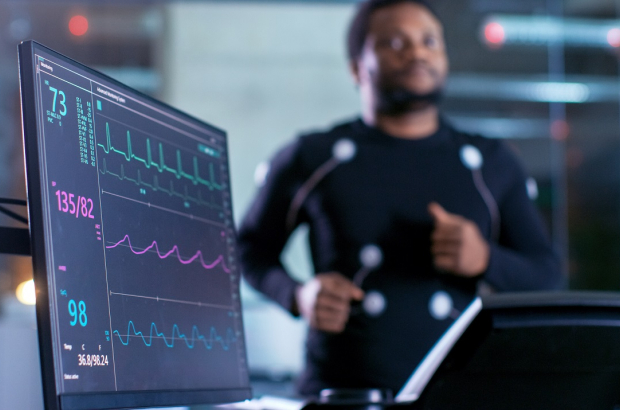- Daily & Weekly newsletters
- Buy & download The Bulletin
- Comment on our articles
VUB test helps athletes avoid ‘overtraining syndrome’
To become a top athlete, there’s no arguing that limits of physical endurance have to be pushed, over and over again. But athletes also need to get enough rest – both physical and mental – or they risk developing “overtraining syndrome”, which can curtail their physical abilities permanently.
To ensure that athletes don’t cross this line, researchers at the Vrije Universiteit Brussel (VUB) have designed the diagnostic Top test.
All athletes know that they need sufficient rest to recuperate from demanding physical labour and “listen to their body” when it tells them something is wrong. But this instinct is sometimes pushed aside because of ambitions to become even faster, ever better.
This can actually result in athletes becoming “overtrained”. Which is not a disaster, unless they develop the so-called overtraining syndrome.
No going back
“The first stage of overtraining is called non-functional overreaching, or Nfor,” says professor Romain Meeusen, head of the VUB’s department of human physiology. “This can generally be alleviated by taking a few weeks or months of rest, with no real training.”
But if the problem is not detected and dealt with in time, it can lead to overtraining syndrome (OTS). It can take years to recover from the condition, and athletes normally never reach their former level again.
The trouble is that both conditions have pretty much the same symptoms: decreasing performance, extreme tiredness, psychological issues and hormonal disruptions. That’s why the VUB developed its unique Top (training optimisation) test.
Researchers measure the levels of hormones coming from the pituitary gland that are good indicators of stressors in the body
The test was put into use some 20 years ago, and just last month a data analysis of 100 participants confirmed how well it has been working.
Before they take the Top test, athletes first undergo a traditional medical check-up, including full blood work, to rule out any other illnesses. The Top test then consists of cycling or running tests, in which the intensity of the exercise is gradually increased.
The researchers measure specifically the levels of certain hormones coming from the pituitary gland in the brain that are good indicators of stressors in the body. There is a break of about four hours between the two tests.
The reaction of the hormones during the second test is crucial. If those reactions are stronger than during the first test, the athlete has Nfor. If the pituitary gland is lethargic during the second test, then the athlete has OTS.

Every year, about 30 local and international athletes take the Top test at VUB. Meeusen (pictured above) recalls the case of a British athlete who in 2000 had made it to the 10,000 metre final at the Sydney Olympic Games, but struggled afterwards.
“He had been training and sleeping at a high altitude for a long period of time to get even stronger, but this had had adverse effects and profoundly disrupted his sleep as well,” says Meeusen. “We found he had overtraining syndrome, and he unfortunately never performed at his previous level again.”
Most of the athletes who suffer from overtraining are active in endurance sports, like cycling or long-distance running, because these require long training sessions and a particularly high level of stamina.
Physical exertion is, however, not the only factor in overtraining. Mental health can also have a big impact. Think, for example, of the constant pressure of professional sport and the loneliness experienced during long journeys away from home.
And while professional athletes are vulnerable to overtraining, recreational athletes run an even larger risk. “Professionals are extensively monitored and assisted to train as efficiently as possible,” explains Meeusen. “Amateurs don’t have this kind of support and generally also have to combine their training with a job and responsibilities at home.”
Whatever kind of athlete, once the diagnosis is carried out, different treatment options can be tried to help with recovery. Treatment depends on the specific situation.
Some might need physiotherapy, for example, while others might seek the help of a sport psychologist. But they all have to get sufficient rest and refrain from training for a while – which is of course very frustrating for athletes.
To prevent overtraining from occurring, VUB and Ghent University have developed together a kind of digital diary for athletes, which coaches can also use to monitor the physical and mental health of their athletes.
Photos, from top: ©Gorodenkoff/iStock/Getty Images Plus, professor Romain Meeusen ©Jean Cosyn/VUB
















